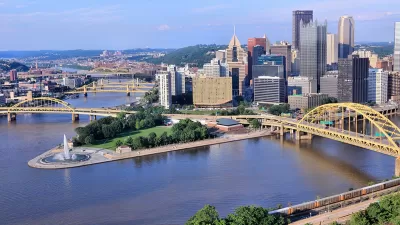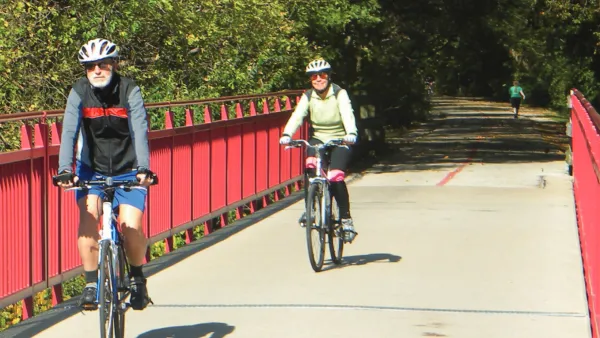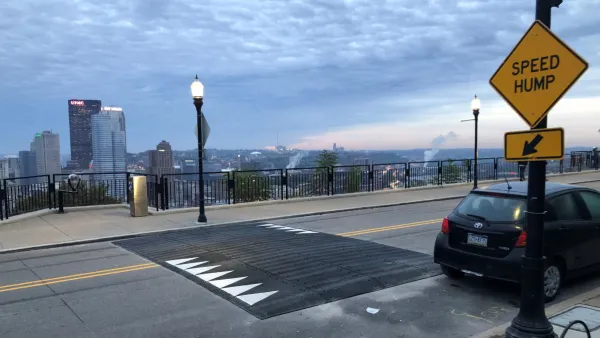Small communities once dependent on coal, coke, paper, lumber, and manufacturing now have a 150-mile bike and pedestrian path contributing to the local economy.

According to a study published this week by Pittsburgh-based consultants Fourth Economy and the Great Allegheny Passage Conservancy, the Great Allegheny Passage (GAP) generated over $121 million in economic impact in 2019.
To measure economic impact along the 150-mile pedestrian and bike path that connects Downtown Pittsburgh with Cumberland, Maryland, researchers surveyed 125 owners of trail-facing businesses, 784 GAP users, and 163 residents of trail towns, according to an announcement written by GAP Conservancy Executive Director Bryan Perry.
Bob Batz Jr. also picked up the news of the study for the Pittsburgh Post-Gazette, including some extra insight and analysis of the study. One key talking point that made it into the article is delivered by Fourth Economy Senior Consultant Mickey McGlasson: "It looks like a scenic trail, but for the communities along the way, that’s an economic highway."
The article by Batz Jr. provides a lot more detail on the effect of the GAP between Pittsburgh and Maryland, including some historical perspective. A previous economic impact study of the GAP "estimated the direct spending by tourists on the then-unfinished trail to total $40.7 million," for example. In 2019, direct spending amounted to $74 million of the $121 million total.
"The new study reflects a continued renaissance along the trail, with nearly 40% of business owners surveyed reporting having founded a new trail-facing business between 2015 and 2019. That’s part of why 93% of survey respondents said the GAP makes their community more vibrant," writes Batz Jr.
And in case you wondering, Batz Jr. also notes that the Great Allegheny Passage has been mentioned as a component of the Great America Rail-Trail that could some day connect Washington State to Washington, D.C.
FULL STORY: Study: Great Allegheny Passage is 'an economic highway' that generated $121 million in 2019

Planetizen Federal Action Tracker
A weekly monitor of how Trump’s orders and actions are impacting planners and planning in America.

San Francisco's School District Spent $105M To Build Affordable Housing for Teachers — And That's Just the Beginning
SFUSD joins a growing list of school districts using their land holdings to address housing affordability challenges faced by their own employees.

The Tiny, Adorable $7,000 Car Turning Japan Onto EVs
The single seat Mibot charges from a regular plug as quickly as an iPad, and is about half the price of an average EV.

Seattle's Plan for Adopting Driverless Cars
Equity, safety, accessibility and affordability are front of mind as the city prepares for robotaxis and other autonomous vehicles.

As Trump Phases Out FEMA, Is It Time to Flee the Floodplains?
With less federal funding available for disaster relief efforts, the need to relocate at-risk communities is more urgent than ever.

With Protected Lanes, 460% More People Commute by Bike
For those needing more ammo, more data proving what we already knew is here.
Urban Design for Planners 1: Software Tools
This six-course series explores essential urban design concepts using open source software and equips planners with the tools they need to participate fully in the urban design process.
Planning for Universal Design
Learn the tools for implementing Universal Design in planning regulations.
Smith Gee Studio
City of Charlotte
City of Camden Redevelopment Agency
City of Astoria
Transportation Research & Education Center (TREC) at Portland State University
US High Speed Rail Association
City of Camden Redevelopment Agency
Municipality of Princeton (NJ)





























